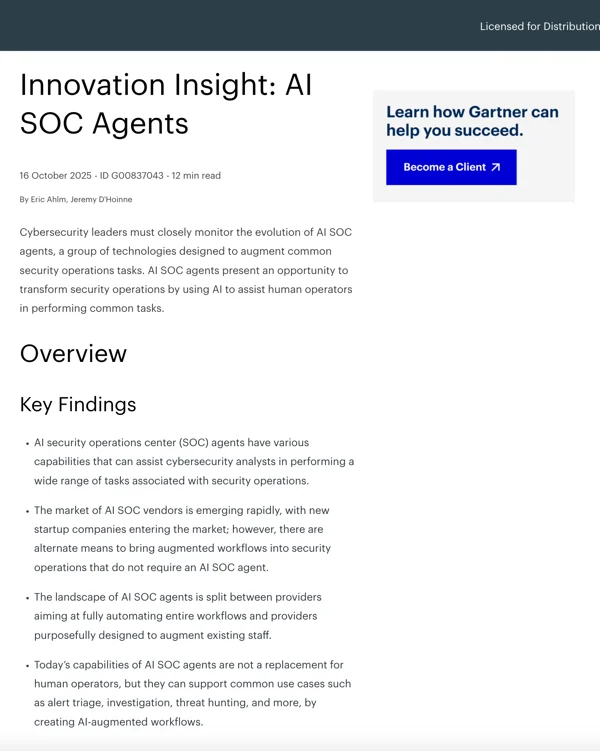
-min.webp)
Security operations face a fundamental math problem: the attack surface expands exponentially while headcount remains linear. SOC Directors cannot hire their way out of this deficit. The traditional model of mitigating risk by adding human analysts to stare at a SIEM is broken.
This capacity failure creates the operational necessity for the AI SOC.
Integrating artificial intelligence into the Security Operations Center is the only viable mechanism to bridge the gap between increasing alert volume and static analytical capacity. This shift moves operations from reactive triage to a proactive, scalable defense architecture.
Most SOCs operate in a perpetual state of deficit. This is rarely a failure of talent; it is a failure of capacity modeling.
The Alert Volume Dilemma: Legacy detection strategies often prioritize coverage over fidelity. By attempting to align with every technique in the MITRE ATT&CK framework without context, organizations generate a flood of low-fidelity alerts. This dilutes focus. When analysts spend 80% of their shift filtering false positives, high-risk lateral movement goes unnoticed.
The Utilization Trap: Human time is the ultimate constraint in cybersecurity. Without SOC automation, high-value analysts burn cycles on low-value data aggregation.
{{ebook-cta}}
The AI SOC represents a fundamentally new operating model where decision-making is decoupled from human intervention for routine tasks.
At the heart of this architecture are AI SOC Agents.
While the "AI SOC" describes the broader ecosystem of AI technologies in the SOC, the AI SOC Agent is the worker unit. These agents mimic the cognitive workflow of a human analyst. They possess the "reasoning" capabilities required to investigate ambiguity, surpassing the limitations of rigid scripting.
Sophisticated leaders understand that "automation" and "AI" are distinct. Standard Security Orchestration, Automation, and Response (SOAR) platforms rely on rigid, linear playbooks. If an incident deviates from the pre-written logic, the playbook fails.
AI SOC Agents represents a generational leap over legacy SOAR.
The immediate ROI of an AI SOC lies in the elimination of manual process involved in alert triage and investigation. AI SOC agents act as an infinite capacity layer that sits upstream of human analysts.
When an alert triggers, the AI SOC agent performs the investigation instantly:
This reduces the Mean Time to Response (MTTR) from hours to minutes. The human analyst validates the machine's conclusion rather than performing the manual labor to reach it.
Implementing an AI-Driven SOC delivers measurable operational improvements.
The integration of AI forces a positive evolution in the SOC personnel structure. The days when the "Tier 1 Analyst" has to copy-pastes JSON logs into tickets is coming to an end.
In an AI SOC, human roles elevate to higher-order functions:
This transition solves the skills shortage. Instead of hiring junior staff to burn out on triage, you hire engineers to build and maintain a defensive machine.
Deploying these technologies requires governance.
The AI SOC is not a future concept; it is the current standard for high-maturity organizations. It solves the capacity modeling failure of the last decade and aligns security operations with the speed of modern threats.
Get Gartner's guidance on evaluating and adopting AI SOC agents

